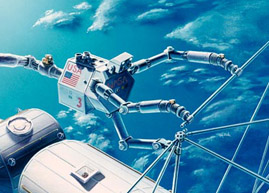You can save time, money and a bit of your sanity with these tech devices designed for entrepreneurs. #1: Square Businesses that accept plastic have an easier time getting customers to pay up — and pay on time. But many small businesses don’t have the infrastructure to take credit cards, which usually require signing up … Continue Reading
Author Archives
Rachel
Oil-Reliant Islands Seek Green Energy Restart
“These are not rich communities,” says Adam Warren, group manager for the deployment group of the U.S. Department of Energy’s National Renewable Energy Laboratory (NREL). “It really put people in a bind. I think island leaders know if oil goes back up to $140 a barrel and they haven’t done anything, they’ll be held responsible.”
Closer Inspection: Washington’s Must-Fly Zone
I can safely say that kites are way more awesome than you remember them after writing this article. Click through to Washingtonpost.com to see.
Off to Austin, See You There!
I fly out to Austin for SXSW tomorrow, a day early, but then the craziness starts in earnest soon after. Heading down? Hit me up on Twitter and maybe we’ll meet up. I wasn’t super excited about a lot of the proposed panels at first, but with a little digging I’ve found a significant number … Continue Reading
Ray Cats, Artificial Moons, And The Atomic Priesthood
How about picking up the latest issue (Mar-Apr 2011) of Mental_Floss? You’ll find my piece on nuclear waste disposal, with all the crackpot theories that were once proposed, is on pages 30 and 31.

Five Forerunners of NASA’s Robot Astronaut
These days, plenty of robots have landed on other planets and been put to work. Still, building a machine that can operate in microgravity around humans but without human control was a unique challenge. The mature, responsible R2 owes its shot at glory in space to a host of robotic “ancestors,” earlier androids that never left Earth as well as less human-like machines that are already hard at work on the ISS.
Upgrading the Electric Grid With Flywheels and Air
Because wind power is generated only when the wind blows, and solar energy isn’t collected on a cloudy day, technologies that can store extra power when it’s not being used and mete it out when needed are becoming increasingly important.
Astronauts Walk on “Mars,” Start Experiments
Since June 2010 six men—three Russians, two Europeans, and one Chinese—have been living in isolation in a 19,423-cubic-foot (550-cubic-meter) “spaceship” outside Moscow, doing maintenance work, conducting experiments, and trying to stave off boredom by playing Rock Band and reading the complete works of Gabriel García Márquez.
New Invisibility Cloak Closer to Working “Magic”
Harry Potter and Bilbo Baggins, take note: Scientists are a step closer to conquering the “magic” of invisibility.
Many earlier cloaking systems turned objects “invisible” only under wavelengths of light that the human eye can’t see. Others could conceal only microscopic objects. But the new system, developed at Massachusetts Institute of Technology and the Singapore-MIT Alliance for Research and Technology (SMART) Centre, works in visible light and can hide objects big enough to see with the naked eye.
Bumblebees Taking a Nosedive in North America
Within the past 20 years abundances of the bee species Bombus occidentalis, B. affinis, B. pensylvanicus, and B. terricola have plummeted by up to 96 percent.
The finding is based on a new analysis of more than 73,000 museum collections of bumblebees, which showed where bees had been found over the last century, as well as collections of wild bees across the United States. The study looked at 8 of the 50 known bumblebee species in North America.